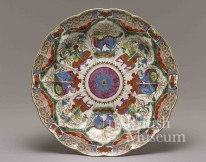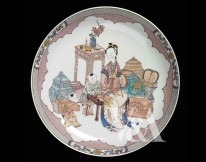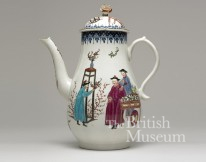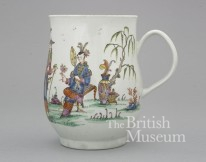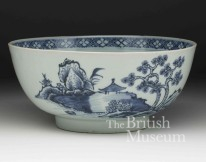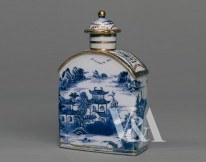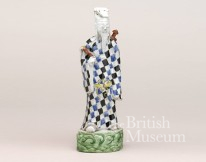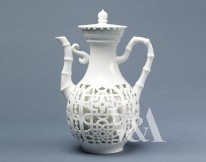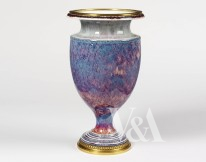6 Chinese Design in the European Tradition
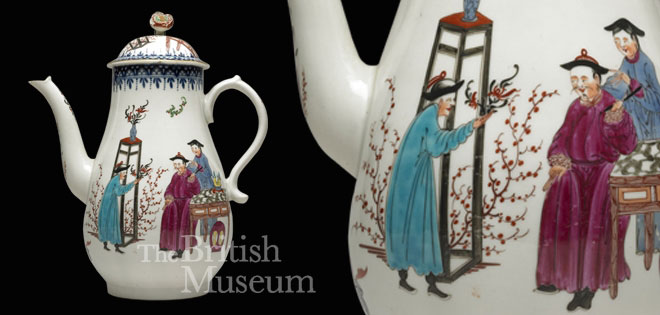
Just as copies of European forms and designs formed part of Chinese trade, so Chinese design reached Europe and was copied there. Sometimes it was closely imitated or emulated: Yixing stoneware teapots were reproduced in both Holland and England in the seventeenth century, and reticulated, or pierced, porcelains fascinated the West from the mid-eighteenth to the late nineteenth century, demanding enormous technical expertise. More often, however, both shapes and decoration were adapted and mixed with both Japanese and European elements. Some early Meissen porcelain vases were based on Japanese sake bottles and were ornamented with Chinese motifs in relief.
There were two styles of Chinese porcelain painting which were widely copied. One, known as famille rose has a predominantly pink palette, whist the other, famille verte, was mainly green. In China these styles were introduced during the Kangxi period of the Qing Dynasty when painting over the glaze in enamel colours allowed greater subtlety of representation. These palettes were quickly copied in Europe on both pottery and porcelain.
Glaze effects too were directly copied from Chinese ceramics, including the copper-based ‘oxblood’ or in French ‘sang-de-boeuf ’ deep red glaze which enjoyed great popularity in Europe in the nineteenth century.

